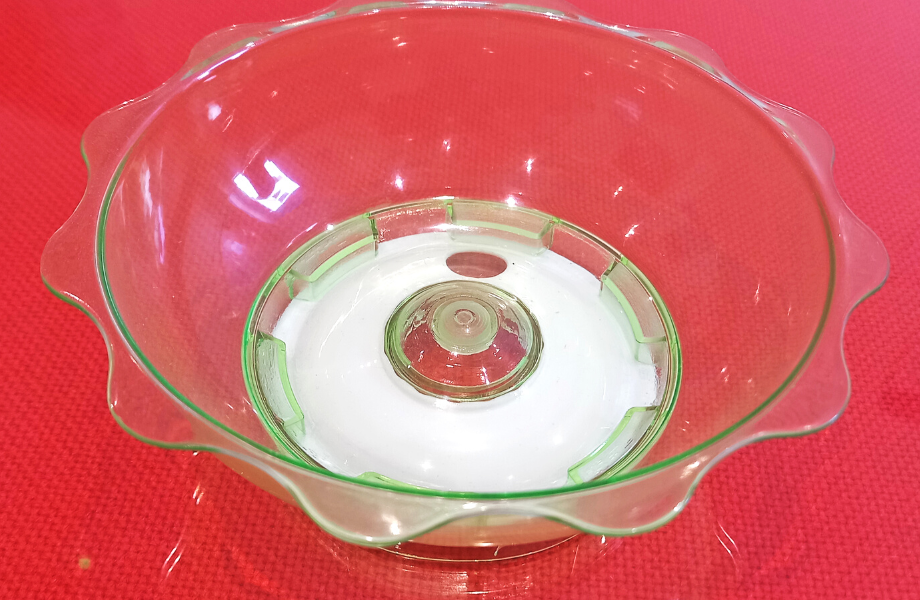Vacuum casting is the perfect complement to 3D printing (additive manufacturing) and CNC machining for producing prototypes, particularly when you need low volumes rather than one-offs. Depending on the intended use for the parts and, therefore, the functional and aesthetic requirements, we can apply a wide range of finishes.
Vacuum casting is used for concept models, functional prototypes, jigs and fixtures, and end-use parts, so the finish(es) must be selected carefully to suit the application.
Material considerations
Parts are vacuum cast in polyurethane resin. However, resins are available in a choice of grades, meaning parts can have very different material properties – from hard grades simulating glass-filled nylon or ABS, through to soft elastomeric grades. Furthermore, resins can be water-clear or pigmented to match almost any colour or tint, and surfaces can be high-gloss, satin, matt or textured. Consequently, many parts need no secondary finishing operations thanks to the combination of pigmented resin and as-moulded surface finish.
Post-processing
All vacuum cast parts need to at least have gates and risers removed (required for the flow of resin through the tool), and mould tool part lines often need cleaning up. This is done by hand and the degree of work required varies.
Sometimes skilful use of a scalpel is sufficient, while other parts may need to be lightly sanded to remove witness marks, then polished back. It all depends on the grade of polyurethane, whether the surface is an ‘A’ surface or ‘B’ surface, if any subsequent finishing operations are required, and the part’s intended use.
By this point the part will have already been heat-cured but it may be necessary to place it on a curing fixture for up to seven days to prevent distortion and maintain tighter tolerances.
Aesthetic finishing options
If a better aesthetic is required than can be provided by pigmented resin, then the part can be primed and painted. Paints do not adhere well to low-modulus elastomers, so painting is really only suitable for harder grades of polyurethane resin. For parts that have been overmoulded with a softer grade to create tactile grips or functional seals, these areas can be masked prior to painting.
We can wet-spray virtually any colour onto vacuum cast parts and the finish can be specified as high-gloss, satin or matt. Clear lacquer is a further option for improving the appearance of as-cast parts, or a soft-feel rubberised coating can be applied over some or all of the part.
Another option, also applicable only to harder grades of resin, is vacuum metallisation. This is a popular option when prototyping, for example, consumer goods or automotive lights, but it can also enable vacuum cast parts to mimic metallic components in non-functional models.
Functional finishing options
Functional finishes can be applied to parts destined for functional tests or late-stage prototypes that need to perform as production items as well as having the right aesthetic. In the latter case, we can apply both functional and aesthetic finishes.
Typically, a part might have an RFI/EMI coating applied to internal ‘B’ surfaces. This is particularly important for electronic devices that might be affected by or cause electromagnetic interference.
Another option is a blackout coating applied to the internal ‘B’ surfaces. This can ensure the correct visual appearance of a prototype incorporating lamps or lighting, even if only small indicator LEDs are being used. If in doubt, talk to us about your project and we can advise whether or not a blackout coating will be necessary.
As with painting and vacuum metallisation, functional coatings can normally only be applied to parts cast from harder grades of polyurethane resin.
Adding the finishing touches
When a prototype must look like a production-quality item, the finishing touches make a huge difference. We can use laser engraving, pad printing, silk screen printing or apply decals to display logos, branding, symbols, alphanumeric text or other graphics. If customers provide the artwork, we can look after the rest. To improve the markings’ resistance to handling, we might apply a protective coat of lacquer on top.
Assembly operations
Assembly operations are not strictly the same as finishing but they are worth mentioning here. Large parts may need to be vacuum cast in sections and joined together by our team of model makers prior to finishing. In other cases, ‘assembly’ might refer to the addition of threaded inserts or location pins.
Often when we vacuum cast parts, customers ask us to assemble these with other parts that we have vacuum cast, or parts we have 3D printed or CNC machined (milled or turned parts). We can also assemble the vacuum casting parts with components free-issued by the customer or standard off-the-shelf components. Whatever your assembly requirements, talk to us and we will help in whatever way we can.
Other options with vacuum cast parts
Assembly of threaded inserts was mentioned above but another option is to insert mould these or, indeed, other features. For example, we might CNC machine sub-components with tight tolerances, then insert mould these in a vacuum casting so the final part benefits from the precision of CNC as well as the versatility of the vacuum casting process.
Similarly, we can use vacuum casting to overmould parts. Typically, we use this to add tactile soft grips or sealing features to parts. Mostly this is for prototype parts but we also overmould plastic and metal end-use parts.
Talk to us
If you need vacuum cast parts or you would like to discuss the finishing options for a prototype you have designed, contact us on 01763 249760.



